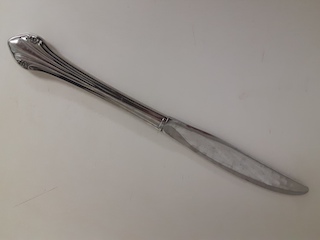B.M. climbed into the home through an unlocked window and then attacked Sophia with a metal butter knife. Sophia hid under a blanket while B.M. slashed at her with the butter knife near her feet. There were no stabbing movements, just slashing. A third sister intervened and broke up the tussle and the police were called.
B.M. was then arrested and, in juvenile court, faced a petition alleging felony assault with a deadly weapon in juvenile court. The “deadly weapon” identified was the butter knife.
The petition was sustained and the juvenile court judge, Brian J. Back, found B.M. to be a ward of the court and sentenced her to spend 90 days in juvenile detention. B.M. then appealed the finding, but the appellate court, in October 2017, sided with the juvenile court judge. It found that it did not matter that Sophia was able to fend off great bodily injury with her blanket or that B.M. was not adept at using a knife. What mattered was that B.M. “could have easily inflicted great bodily injury.”
B.M. then appealed to the California Supreme Court. The issue seemed to be whether “could have been used” or “likely to cause” was the standard our courts should apply in considering whether an object legally qualified as a deadly weapon.
Justice Goodwin Liu then issued a 21-page unanimous ruling that, for now, seems to clarify and end the debate. Liu disagreed with the prosecution that the gist of what is a deadly weapon depends upon whether it is possible that an instrument or object could be used to cause death or great bodily injury to be a deadly weapon.
Instead, Liu wrote that for an object to qualify as a deadly weapon based on how it was used, “defendant must have used the object in a manner not only capable of producing but also likely to cause death or great bodily injury.”
In other words, there are two parts to the analysis. The object or instrument used in an assault must be capable of producing great bodily injury or death, but the manner of its use also must such that that result is likely. Turning to the facts of B.M.’s case, Liu wrote: “Using a butter knife — even one with small ridges on the blade — to make a few slicing motions across the blanket-covered legs of a healthy person is not, under any definition of the word ‘likely,’ an act that is likely to produce great bodily injury.”
We appreciate this ruling because it seems to set new limits on what is assault with a deadly weapon because prosecutors should not allege assault with a deadly weapon with just any instrument used by a defendant without also considering closely the manner in which defendant used the “weapon” and its likely result.
The citation for the California Supreme Court ruling discussed above is People v. B.M. (2018) 6 Cal.3d 528.
 Butter Knife
Butter Knife